Did you know that your pool pump is the largest consumer of electricity in your home? Here is a simple 4 step process to help you determine how much your pool pump costs to operate. Check out the second section we added showing the savings which can be obtained by upgrading to a variable speed pool pump.
Step 1 – Energy Consumption
First, you will need to determine the energy consumption of your pool pump. Here are the kWh consumptions for the most common pool pumps.
¾ HP = 1.26 kWh
1 HP = 1.72 kWh
1-½ HP = 2.14 kWh
2 HP = 2.25 kWh
2-½ HP = 2.62 kWh
3 HP = 3.17 kWh
The equation used above to determine kWh is Multiply the pool pumps volts x amps to get watts then divide by 1000.
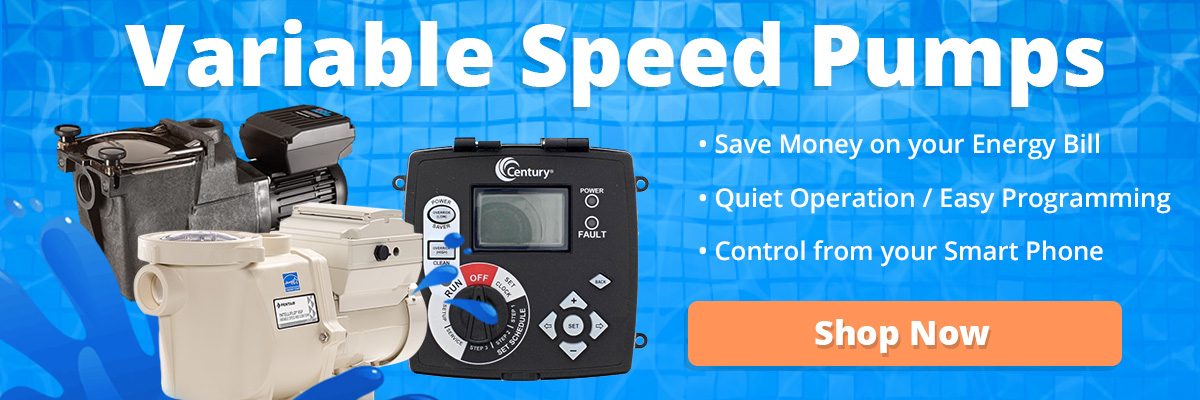
Step 2 – Daily Energy Consumption
Multiply your pumps kWh by the number of hours per day you run your pump. Here is an example using a 1-½ HP Pool Pump running 8 hrs. per day (Use kWh from step 1)
2.14 kWh x 8 hrs = 17.12 kWh per day
Step 3 – Energy cost?
View The Cost of Electricity for All 50 States to determine your cost of electricity. In the example below, we are using California. FYI the national average is 12.29 cents per kWh.
17.12 kWh x .17 cents (cost of energy in California) = Daily cost to run pool pump $2.91
Step 4 – Determine annual cost
Take daily cost and multiply by how many days per year you operate your pump.
$2.91 cost per day x 365 days = $1,062.15 per year to operate your 1-½ HP pool pump.
How to Reduce cost from $1,062 to $496
A variable speed pump is a pump that can run at a full range of horse power’s. This means you can dial the pump in to run at 1-½ HP or dial it all the way down to a ¼ of HP. When dialing the pump down to the lower HP the cost of operation can drop by as much as 80%. Using the process above let’s see how much it will cost to operate a 1-½ HP variable speed pump vs. the 1-½ HP single speed pump.
Step 1 – Energy Consumption
On average Variable Speed Pool Pumps draw about 4.35 amps this means the pump consumes 1.0 kWh
Step 2 – Daily Energy Consumption
1.0 kWh x 8 hrs = 8.0 kWh per day
Step 3 – Energy cost?
View The Cost of Electricity for All 50 States to determine what you are paying for electricity. In the example below, we are using California.
8.0 kWh x .17 cents (cost of energy in California) = Daily cost to run pool pump $1.36
Step 4 – Determine annual cost
$1.36 per day x 365 days = $496 per year to Operate a 1-½ HP Variable Speed Pump.
Cost to Operate 1-½ HP Single Speed Pool Pump $1,062 / yr Vs. Cost of Variable Speed Pump $496 / year.
Variable Speed Pool Pump Resources
If you think a variable speed pool pump makes sense for you then check out our Variable Speed Pool Pumps or our Variable Speed Pool Pump Buying Guide. If you have any questions on determining the correct pump for your pool then leave a comment below or give us a call at 1-877-372-6038

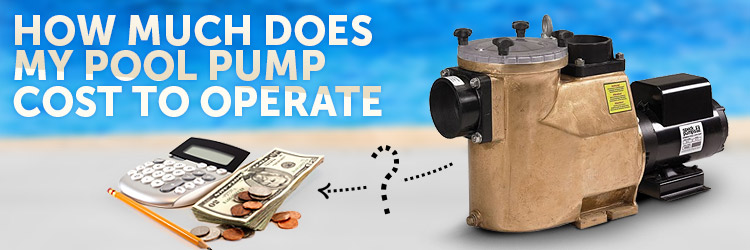
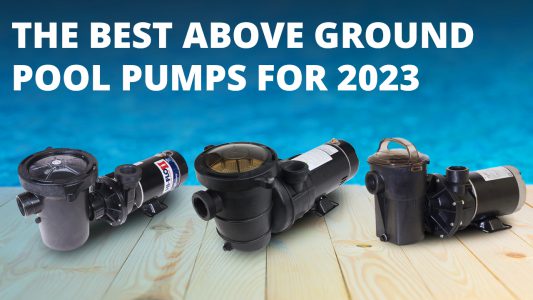
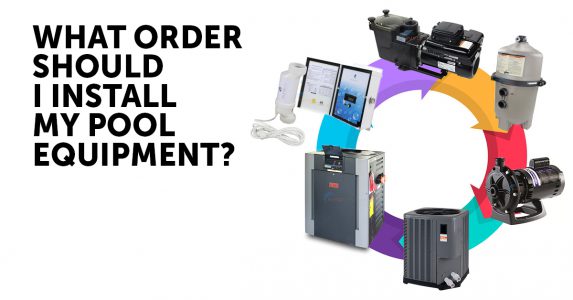
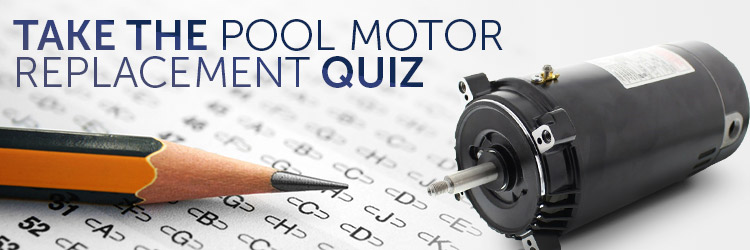
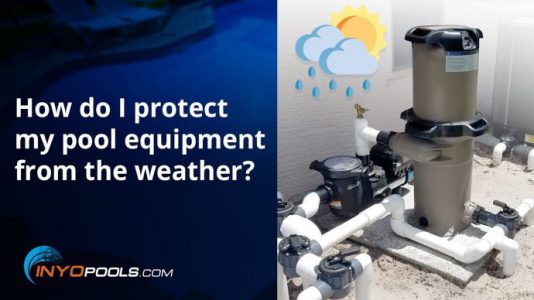






(david)
how much volts dose a 2500 gallon above ground pool take daveid im 11
I have currently have an A.O. Smith 1202SQ Single speed 2HP pump model number K48N2PA105C4 running with 230v. I am looking to move to a variable speed pump. What are my options?
The SQ1202 and K48N2PA105C4 are model and catalog numbers for the standard efficiency motor; the variable speed replacement motor for it is the ECM27SQU. If you want a whole pump replacement, we will need the model number from your pump housing’s sticker.
All I know is that my 1hp heyward pump is using 6. 5 amps when running. I have 3 ac split systems that are off My 3 year old 2ton air conditioner uses 6.3 amps when running as per test. again it is off My electric bill is twice what all the neighbors are. They have a $189 dollar electric bill mine is $400 I have checked every appliance in the house and can’t seem to figure out why. At tis point of the year we are not using Ac or heat much at al here in central FL. I have ben monitoring my Kilowatts on the meter. We seem to be using 40 kilowatts per day (24 hour period) with the pump. Without the pool pump we are at 23 kilowatts per day (24 hour period). I left a reply here and was told too many bends in the system. A variable speed pump won’t work. what do I do? I would like to be more efficient with the electric bill. This sucks.
We’re in Central Florida as well and considering how cool it is, you shouldn’t have to run the pump but a few hours a day. When the outside temp is lower than 60 degrees, algae growth pretty much stops. I would consider lowering your run time. What is the voltage the motor is pulling?
That’s right folks. Save money on electricity and spend more money on chemicals! The average consumer thinks that turning their new 3hp variable speed pump the local retailer talked them into down to 600rpms and then running it 2 hours a day, in Florida, all year long is a great way to make that expensive vs pump pay for itself. There is so much tripe out there regarding how great variable speed pumps are. Even if you ran your fancy 3Hp vs pump at 600rpms (like a 1/4HP pump) all day long, the water level in your filter will only run through 1/5 of your filter. Do yourself a favor and edjumicate yourself on the importance of turn over rate, circulation, filtration as it relates to water quality and chemical demand because the companies who are pushing this technology are making it all about energy savings when in reality its all about selling you a supposedly technically superior product that in fact will cost you more to repair or replace than the good old fashioned, and unfairly maligned, single speed pump. Now you have a digital control interface and/or drive assembly that can break which may cost more than the motor it sits on. Many companies don’t even want to mess with replacing just the unit, even if the motor is just fine, and you’ll end up buying a whole new unit. When a single speed dies you only have to replace the motor. But hey! You saved up enough money on your power bill with the old variable speed motor to pay for half of a new variable speed motor and brain box.
I can only speak to my experience but I have never heard of a pool technician (or anybody for that matter) suggest running a pump at 600 RPM for 2 hours a day. Even at full speed a pump could have trouble turning over the pool in 2 hours, depending on the pool size and feet of head. This is kind of a strawman argument you have made. Also, I am not sure where you are getting the 1/5 of your filter number.
Every manual I have seen from a manufacturer, and all the articles provided on this blog and our how-to guides, specify you need to lengthen runtime to accommodate for lower RPMs. There are also my previous replies on this article’s comments above that explain and show pump performance curves.
If you would like more info on how you would be saving money by using a variable speed then have a look at this the following video: How to Save Money with Variable Speed
I will agree, that the controllers for the variable speed pumps can be costly, if not prohibitive to repair. But designs for these controllers are improving each year. A variable speed motor that has a great quality and price combination, are the Century V-Green motors. A replacement V-Green motor comes in about $350 to $650 dollars. That is cheaper than most big brands replacement controllers while having solid, durable performance.
Per the ohmmeter (not a guide from the salesman) my average 25k gallon pool with 1.5HP runs at about 1.4 kwh and about 1500 hours a year, nobody in the desert is paying .17c per KWH so at a overestimation of $.30 that is about $630/yr. I have seen early “pamphlets” from the manufacturers claiming ~$900/yr savings for average residential…hard to save $900 if, at the most, you only spent $650. If a civil engineering firm constantly monitors your vs pump to maximize rpm to your, very personalized and constantly changing, dynamic head you might be able to achieve a 35% increase in efficiency (easily achievable by built in software that nobody offers?). For most people and pool professionals achieving 20% should make you proud. That is $126/year and would take 6 years plus to make your money back (much longer if you pay less than $.30/kwh year round)…how long do they last?
Commercial pools have to run 24hr/day while open per most health dept. rules. Pools were designed, and pumps were selected to turn over a certain amount of water per day based on pool size (even though most do not need to). Installing a VS pump does make things much more efficient because you now have a 1HP pump in a 3HP pump’s clothing to bypass regulations through a loophole, not so much the efficiency of the pumps, as the manufacturers claim.
That being said, I would certainly install one for a new pool or commercial pool but would probably not replace a residential pump with the current prices.
LOL! In the Phoenix area with srp, our average off peak rate is 08 cents per kwh! And that’s 23hours a day. So funny. And it’s too easy to not run ac/poolpump/waterheater for a measly 2or3 hours in the middle of the day peak rate.
And for those that live in California or places with insane electric rates, get solar and do it right or move. Educate yourself. People who argue against solar are straight up ignorant and idiots. Facts are facts. And solar has been and will be the future. Sorry, but the entire country could be basically powered by solar EASILY. We have so much desert “wasteland”.
Every doubling of pump speed is an 8-fold increase in power consumption.
Running at 1200 RPM for 12 hours will move the same volume of water as 3450 RPM does in just over 4 hours at 5% the cost. 100%/(3450/1200)^3 = 4.2%
I’ve done this for years with no detrimental issues and huge energy savings.
what about if we add solar panels to run this pump?
If the pump is running off of solar panels completely, then it would be free to run your pump, after the initial cost of the solar panels. If the panels only account for a percentage of the power sent to the pump, then you would subtract that percentage from the sum.
Then get a DC motor. All DC pumps are VS and you can hook it straight to the panels for maximum efficiency, and economy. They are hiding DC motors from the public though…they were much more common before the energy efficient business came along with all its subsidies.
Instead of all this conjecture, why not just measure it? I did. My 1.5HP (1.1kW as per nampelate) pool pump is hooked up to calibrated power meter, and consumes about 1.3kVA which is what you’re billed on, not output kW. This gives a PF of about 0.85 which is ballpark for a simple DOL motor.
So …. unless the motor and/or pump in your original example is extremely inefficient, or running wayyy above FLC, something is wrong. Even if you were quoting output (not input) power, something is still wrong
This is a great compilation of information and helpful links. Thank you!
Your motor guy is thinking of a fixed displacement pump. tell him that pool pumps are centrifugal
We’ve known him for years and he knows we only deal in pool pumps, e.g., “Inyo Pools.” He is basically an encyclopedia of motor knowledge I reach out to just to verify one thing or another.
I’m going to take his word on this, and not just because he came down on my side. Trust me, I’ve had to eat crow once or twice after having him review other work.
When comparing a variable speed pump to non variable you have to take into account the actual amount of water being filtered. A lower flow will take a longer time to get the same amount of water filtered. The comparison needs to be on the total amount of water filtered, not on time.
This is true. But, the lower flow rate is coupled with a much lower amp draw to provide the savings. To give an easy example, a single speed running at 3450 RPMs is drawing 15 amps. A dual speed of the same HP will pull 15 amps on the 3450 RPM (hi speed0 but will only pull 3 amps or less at 1725 RPMs (low speed.)
Stewart is right. Just because it is drawing lower amps does not make it better. If you need 4O gpm at 20 psi, and low speed produces 20 Gpm at 20 psi, it is not a savings.
I’ll post this here, and leave a reference to this post to your post above as well.
Just to make sure I was playing on the right side of facts I asked the motor guru over at Century for help. I copy and pasted screenshots of your comments and mine.
I’m an engineer, so I’ll add my 2 cents.
Motors are rated in horsepower output. To get 1 horsepower out (746 watts), you have to put more than 1 horsepower in. If the motor has an efficiency of 75%, then the input horsepower is 1.33 So you multiply the 746 by 1.33 to get the input watts, or 995 watts.
So a motor putting out 1 HP will draw about 1 kilowatt.
The pump efficiency only comes into play if you are interested in the horsepower of the pump.
To add another bit of information, to make an accurate estimate of the horsepower input (which is what you pay for) you would have to measure the actual amperage going into the motor.
What is on the nameplate of the motor is accurate if the pump is drawing the full 1 horsepower.
Normally the pump is sized for the pool, and the motor is the minimum HP that will operate the pump as required, so the nameplate amps are a pretty accurate guide as to what the input power is.
The pump input horsepower requirement will vary as the pressure at the pump discharge port varies. In other words, it will be less with a clean filter than with a dirty filter.
Thank you for the input.
BTW, I’m not sure why but I am pretty sure every engineer I have met has started the conversation with “I’m an engineer.”
For anyone reading this comment, please refer to my longer comment down below for an engineer at century’s take.
Yes, and please see my comment on the motor guy’s take. He is talking about a fixed displacement pump. Centrifugal pumps (like all pool pumps) are totally different WRT performance.
Ok, while I appreciate the time and energy it must have taken for people to break down all of these “kilowatts per hour” calculations, can someone please just say how much actual $$ having a heated pool has added to the monthly electric bill? (Avg)
Thx.
Because there isn’t a set amount of money that is going to be tacked onto the power bill because you are heating your pool. The cost it takes to heat your pool would have to factor in, size of pool, pump model, pump hp, feet of head, starting pool temp, desired pool temp, time of year, area of the country, whether the pool is shaded or not shaded, size of pool heater, if it is a heat pump or a heater.
But all that is why we have these calculations, so you can figure it out for your specific calculation.
All of the above calculations have to do with the cost of running the pool pump. Heating is another matter entirely.
There are some estimates for heating s pool, but it depends on the environment, and the type of heater. In Pensacola, in the spring months, it costs about $30 per day , using natural gas.
To calculate the cost to keep a pool heated, you need the pool surface area, and the temperature difference (pool temperature – ambient temperature).
The heat loss is approximately 10 BTU per hour per square foot of pool area per degree of temperature difference.
For example , a pool that is 20′ x 25′ (which has a surface area = 500 SF), and a temperature difference of 20 degrees. would have the following heat loss:
BTU Loss = Pool Area x Temperature Difference x 10
= 500 x 20 x 10 = 100,000 BTU per hour
The heating value for natural gas is 1000 BTU per cubic foot, and for an electric heater (not a heat pump), 3413 BTU per kW-hr
Natural Gas Required at 80% heater efficiency = 100,000 / 1000 / .80 = 125 CF gas per hour. (Gas is ususally billed in 100 cubic foot increments or CCF, so this equals 1.25 CCF)
Electric energy required at 100% heater efficiency = 100,000 / 3413 = 29.3 kW-hr (Assumes a standard electric heater, not a heat pump)
Volts times amps times time will give you kWh
The horse power is the pump rating. Not the cost.
The efficiency of the pump will make the difference
Good times!
Above saving is incorrect. It assumes that a variable speed pump delivers same amount in 3 hrs as 1.5 hrs.
In which explanation are you seeing this claim?
Patrick : How did you even arrive at 1hp = 1.72kWh ? this is absurd.
It is a well know fact that 1hp = 746W and in straight forward calculation to get the kWh is by the below formula for a single phase motor (as generally 1hp motors are single phase)
kWh consumed = (HP rating of the motor /(1000 x Efficiency of the motor in %)) x 100 x H hours that you are running it
For example, for a 1hp motor, you can take efficiency of a water pump to be about 90% for general calculations and if you are running it for 8 hours then = (746 /(1000 x 90)) x 100 x 8 = 6.63 kWh
Hello Avinash,
I had to bring out the big guns on this just to make sure who was right. I contacted Regal-Beloit (aka A.O. Smith-Century) and their main tech got back to me with a lengthy but useful explanation. It goes as such:
“If you are trying to answer the blog comment, it would be necessary to know the actual motor part number. 1.72 kw is not out of line for a specific 1 HP motor. By definition, 746 watts output is 1 HP. Pump motors have service factors varying from “SPL” (for special – usually less than 1) to 1.95 (the highest I know of). This all relates back to a time when this type of motor was used on home water systems. People with wells usually lived outside the city, and seventy or so years ago, the power supply often was not the 110 or 115 volts it was supposed to be. As a result, motors were assigned “service factors” or “safety factors” by the National Electrical Manufacturers Association. Service factor is defined as a multiplier, which applied to the horsepower, indicates the total horsepower load the motor can carry at rated voltage and frequency. Years ago, this factor was used to allow the motor to operate with under voltage conditions. As time passed, these motors were applied to swimming pool pumps, and the power grid was upgraded, so the under voltage conditions did not exist. Rather than reduce the motor total horsepower, pump manufacturers applied impellers which used more of the total available horsepower. In some cases, a pump manufacturer would raise the nameplate horsepower and lower the service factor (motor was not changed, and had the same total horsepower) which gave the impression that a buyer was getting a stronger pump than that offered by a competing pump company. This was called an “uprated” motor. Needless to say, this created a lot of confusion in the industry, and for people trying to replace an existing motor, and only going by the HP rating.
In an inductive circuit (squirrel cage induction motor) Power Factor must be used. It is the relation of the Input Watts, divided by Volts x Amps.
I have no idea where the idea of a 90% efficient pump comes from. The pump manufacturers may be able to provide estimates for the wet ends. Induction motors will vary from the low 60% to low 80% range, so the system efficiency will the product of the motor efficiency times the pump efficiency. It is probably best to just look at the tables we have for cost to operate at various costs per KWH. The only way to be really accurate on the cost to operate a specific pump/motor is to test it in the application.”
whatever
LOL
Greetings!
I am NOT an Engineer, nor do I play one on the internet, and my question concerns the initial startup power that a pool pump requires when it kicks on, as well as watts per hour the pump will mandate. My ex-father-in-law is determined to make the pump solar powered here in California. I have seen that a generator is preferred, but does NOT want that. He enjoys a challenge and has done so much for his family and friends even when the odds make him the underdog.
The Pump is Pentair “Whisperflow” WFE-3 3/4 HP Self- primed pump. Also it is a Century E-Plus (P/N:177449), (Uprated) NFS Service Factor 1.67, Amps 6.0-5.6 / 11.2, Volts 208-230 /115, Amb 40°.
If I read correctly from this site, 1288 watts per hour, but what wattage does that calculate…. peak, average, running, or minimum?
Also, should the pump be shut off when it hits 104° outside?
Since the pump sounds nothing like a whisper, is the pump about to die?
At that point I would think a DC pump might make switching to solar a little less cumbersome.
Any help is greatly appreciated,
– Rob
Calculate wattage by multiplying amps and voltage together. That would give you the normal running wattage. Give the pump a little cover, and you can keep it running throughout the day. If the motor is making a loud screeching noise, then it is likely a bearing issue. You can replace the bearings or just the motor. Replacement motor: 3/4 HP Motor EE – Full Rate (B661, B2661) Replacement: bearings: Two, 203
hi 1HP = 1.72KWh,, shouldn it be more like 0.746 ?? when 1 KW electric motor usually is close to 1.34HP ?
Andreas,
How are you coming to the calculation .746?
The way you calculate watts is Voltage x Amps. For example, the UST1102 the most common motor out there would be calculated in this manner, 115 volts x 15 amps = 1,725 kW
I would say that the pump documentation is max draw at power on (which is why it’s labelled max power). If your system can’t supply 11.3 amps for a 2.5hp motor, then the motor can’t start. Mummy 2.5 hp motor – which is rated at 11.1 amps – typically uses around 2kw / hour, rather than the predicted 2.6kw
Hth
You’re not wrong. There’s enough wrong on this page that I wouldn’t trust it for your calculations
Andreas, you’re not wrong. There’s enough wrong on this page that I wouldn’t trust it for your calculations. The volts times amps works if you know the amperage of your motor and efficiency. 1 hp = 0.746kW is correct. You just need to add the time factor to get to kWh (multiply the kWh number by the number of hours you run your pump).
Gary, thanks for the post, could you let us know the specific items that you feel are wrong. If we have any items which are inaccurate we definitely need to fix them. Any details you can give would be much appreciated.
In step one you equate a unit of power (HP) to a unit of energy (kWh). Which leads to errors later like in step two:
“Multiply your pumps kWh by the number of hours per day you run your pump. Here is an example using a 1-½ HP Pool Pump running 8 hrs. per day (Use kWh from step 1)
2.14 kWh x 8 hrs = 17.12 kWh per day”
Looking at just the dimensional analysis for the units:
kWh x hrs = kWhh, which is incorrect. See?
I have a sux 1000 pump from summer vaves it saying on it 1.4 amper I want to know how much is costs on that if I run it about 10 hours a day
We have to same pool and am wondering the same thing. I noticed it best to keep the pump running as not to get algae.
I found this guide on how to calculate electricity usage: Estimating Electricity Usage
Om om